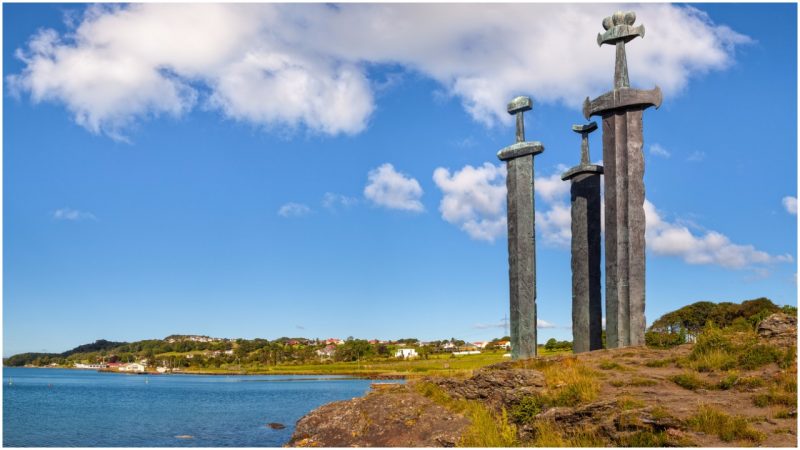By now many of us are at least to some extent acquainted with Sir Thomas Malory’s classic tale of the Lady of the Lake and how she gave Excalibur to King Arthur, or the tale told in Robert de Boron’s poem of Merlin about the magical sword in the stone that could be drawn out only by the rightful ruler of the land.
They differ in some aspects, but both speak of the same Arthurian legend and a mighty sword that could only be swung by a man worthy to hold it in possession. This story about a powerful weapon identified with a single hero is as old as time. Whereas in this specific legend it was Excalibur for King Arthur, ancient Greek mythology speaks of many magical swords. Other legendary blades include Crocea Mors, the sword belonging to Julius Caesar, which was considered to hold supernatural powers, and for Attila the Hun it was the Sword of Mars. Most recently, in George R. R. Martin’s A Song of Ice and Fire, it is the Lightbringer, the sword of Azor Ahai.
“In this dread hour, a warrior shall draw from the fire a burning sword. And that sword shall be Lightbringer, the Red Sword of Heroes, and he who clasps it shall be Azor Ahai come again, and the darkness shall flee before him.”
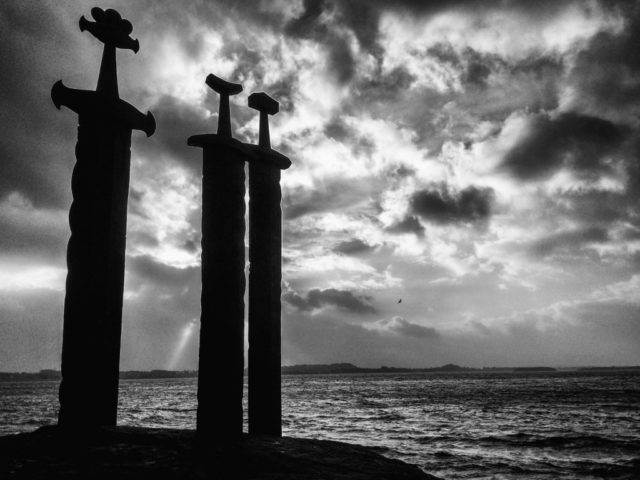
While all these stories tell of individuals who drew their swords out of fire or a stone to aid mankind in times when it was needed the most, a statue in Norway speaks of a time when groups and individuals put their petty differences aside and even buried them, so they could put an end to bloodshed and stand united under the same flag.
Little is known of the particular event, but what information that exists points to a great battle that took place in 872 on one of the fjords in Norway. The Battle of Hafrsfjord, as it is known today, was the result of a long-lasting conflict between three different factions and their leaders in Western Norway, among whom was Harald Fair Hair (Harald Hårfagre), son of Halfdan the Black Gudrödarson.
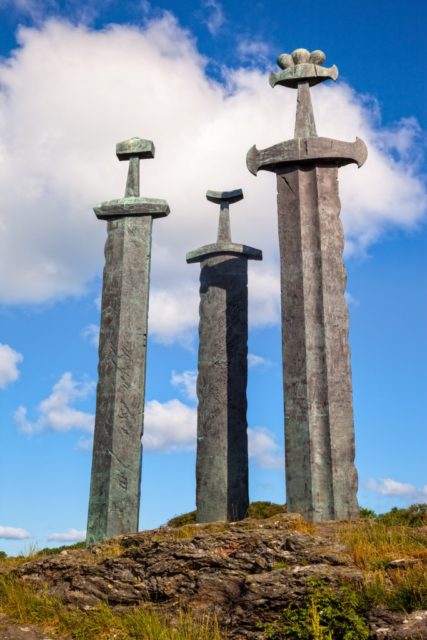
“The Saga of Harald Fairhair” (Heimskringla) is a Scandinavian saga that was written two centuries after the event. According to the story, the Hordaland-Rogaland and Agder-Thelemark factions were advancing with their troops towards Hafrsfjord, they were met there by the strong force of Harald Fair Hair, who was on a mission to unite the Norwegians who up until then lived in small tribes and villages. The Norwegian tribes led a warring life, constantly fighting with one another. According to the legend, Harold, who was in love with Gyda, the daughter of King Erik of Hordaland, had to convince her of his love and devotion by uniting the tribes and thus putting an end to all the fighting between them once and for all. He was the son of a king who wanted to marry the daughter of rival one, and she was the daughter of a king who despised the man who wanted her hand. So marriage was not an option if peace between the two was not reached.
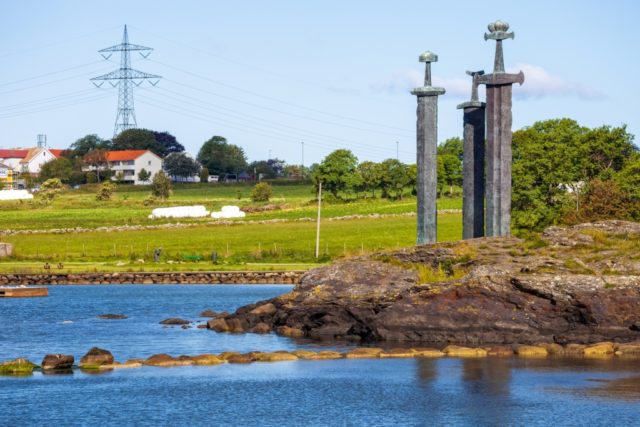
Harold, prior to the battle, had taken rulership over several small kingdoms in Vestfold, and continued with his conquest believing that negotiating peace from a position of strength would bring more fruition to his noble cause, and a better chance to negotiate the terms with the father of his loved one. But as he was growing in strength and force, the other kings allied against him and planned a secretive attack. News spread from the south that Erik of Hordaland, King Sulke of Rogaland, Earl Sote, the King of Agder and brothers Hroald and Had the Hard from Thelemark had joined forces and were headed towards the mainland with a large fleet.
This was a clear indication that an imminent attack was on the way and there was no space for a peaceful resolution. As a result, Harald assembled his troops and intercepted them at Hafrsfjord, where a great battle was set in motion, in which many, including King Eirik, lost their lives. In the midst of all the dead bodies spread around the battlefield, Harald was the last man standing and his troops fortunate to see the light of day. Many fled to the nearby Icelandic islands, and everyone left on the land came to live united under the rulership of King Harald Fair Hair, the first King of Norway.
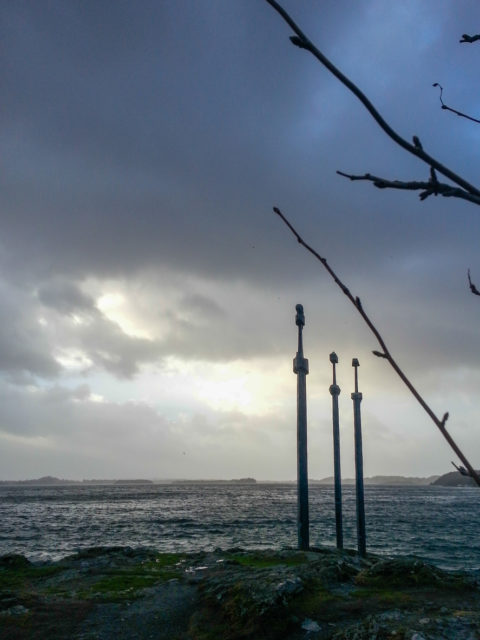
His mission was completed. Harald got to marry Erik’s daughter, but at a devastating cost. This story is more of a romanticized legend than of actual historical evidence, and complete peace and unity took probably hundreds of years to be achieved. However, this battle is considered the greatest contributor to the unification of Norway into one country.
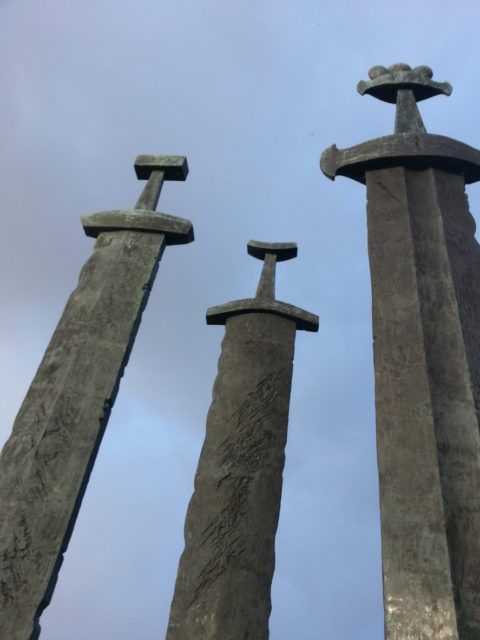
Three giant Viking swords are now forever embedded in solid stone on a Nordic hill in Hafrsfjord, and stand tall against the sun as a reminder of an ancient battle that eventually unified the kingdoms of Norway and its people into one nation. The swords were forced through solid rock so that they can never be removed and such a battle never to occur again. They stand for peace, unity, and freedom, and the place where they are impaled is near the city of Stavanger in the Rogaland region.
Read another story from us: Hunters find a 1,200-year-old Viking sword in remarkably good condition
The memorial itself is named “Sverd i fjell” (swords in rock) and was constructed in 1983 by sculptor Fritz Røed upon the request of King Olav V. It consists of three bronze swords, each higher than 30 feet. The highest represents the sword of King Harald Fair Hair, while the other two symbolize the opposing factions
It stands proudly as a tourist attraction, and a historical reminder for Norwegians never to draw a weapon again against fellow countrymen.
